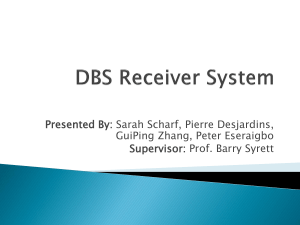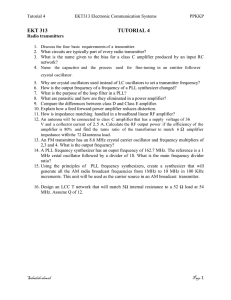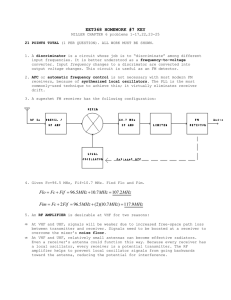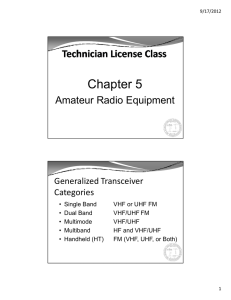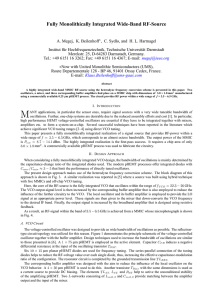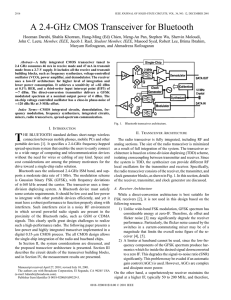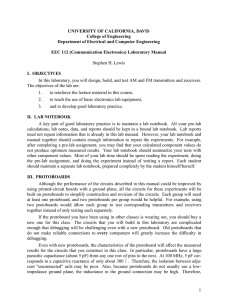A High-Frequency FM Transceiver Yun Bai, Sanaz Adl, and Neil Goldsman
advertisement
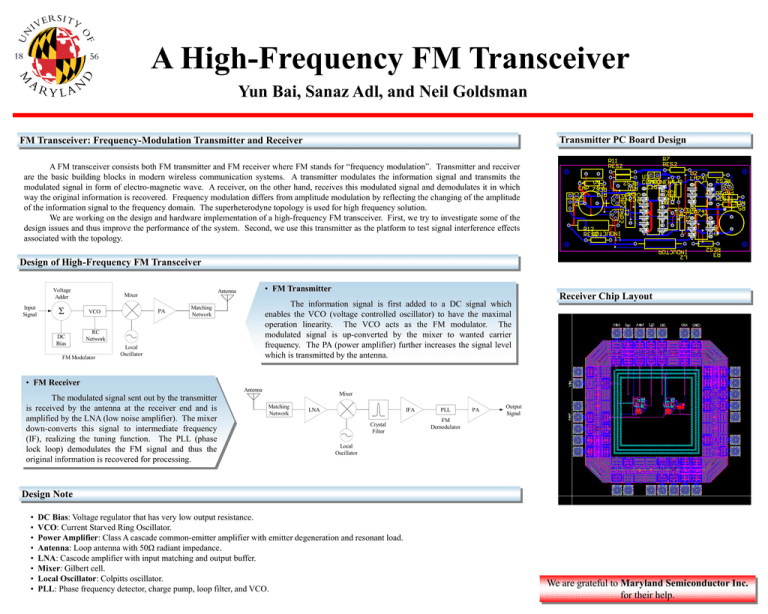
A High-Frequency FM Transceiver Yun Bai, Sanaz Adl, and Neil Goldsman Transmitter PC Board Design FM Transceiver: Frequency-Modulation Transmitter and Receiver A FM transceiver consists both FM transmitter and FM receiver where FM stands for “frequency modulation”. Transmitter and receiver are the basic building blocks in modern wireless communication systems. A transmitter modulates the information signal and transmits the modulated signal in form of electro-magnetic wave. A receiver, on the other hand, receives this modulated signal and demodulates it in which way the original information is recovered. Frequency modulation differs from amplitude modulation by reflecting the changing of the amplitude of the information signal to the frequency domain. The superheterodyne topology is used for high frequency solution. We are working on the design and hardware implementation of a high-frequency FM transceiver. First, we try to investigate some of the design issues and thus improve the performance of the system. Second, we use this transmitter as the platform to test signal interference effects associated with the topology. Design of High-Frequency FM Transceiver Voltage Adder Input Signal DC Bias Mixer PA VCO • FM Transmitter Antenna The information signal is first added to a DC signal which enables the VCO (voltage controlled oscillator) to have the maximal operation linearity. The VCO acts as the FM modulator. The modulated signal is up-converted by the mixer to wanted carrier frequency. The PA (power amplifier) further increases the signal level which is transmitted by the antenna. Matching Network RC Network FM Modulator Local Oscillator Receiver Chip Layout • FM Receiver Antenna The modulated signal sent out by the transmitter is received by the antenna at the receiver end and is amplified by the LNA (low noise amplifier). The mixer down-converts this signal to intermediate frequency (IF), realizing the tuning function. The PLL (phase lock loop) demodulates the FM signal and thus the original information is recovered for processing. Mixer Matching Network LNA IFA Crystal Filter PLL PA Output Signal FM Demodulator Local Oscillator Design Note • • • • • • • • DC Bias: Voltage regulator that has very low output resistance. VCO: Current Starved Ring Oscillator. Power Amplifier: Class A cascade common-emitter amplifier with emitter degeneration and resonant load. Antenna: Loop antenna with 50Ω radiant impedance. LNA: Cascode amplifier with input matching and output buffer. Mixer: Gilbert cell. Local Oscillator: Colpitts oscillator. PLL: Phase frequency detector, charge pump, loop filter, and VCO. We are grateful to Maryland Semiconductor Inc. for their help.
